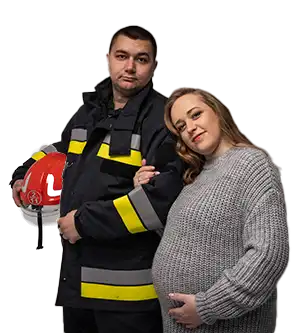
Nationwide Civilian Airports Initiate Voluntary AFFF Phase-Out Projects
Aiming to protect firefighters, workers, and neighboring communities, airports are substituting safer alternatives for hazardous firefighting foam.
Monday, April 7, 2025 - Starting the voluntary phase-out of AFFF, a kind of firefighting foam connected to long-term health and environmental hazards, civilian airports are handling problems on their own around the nation. AFFF was thought of as the gold standard for battling fuel fires for decades, but its chemical composition has drawn major concerns lately. This expanding issue reflects a public focus on firefighter cancer lawsuits. An AFFF cancer lawyer would argue that ignoring early warnings about a product's risk just serves to exacerbate the effects. That similar lesson seems to be guiding airports toward quick action instead of waiting for laws to catch up. These modifications are meant to safeguard not only airport staff and firefighters but also surrounding areas possibly impacted by chemical runoff or contaminated water. This movement is interesting as it is voluntary. These airports are switching based on their own criteria; they are not waiting for government orders. The change is not usually simple. Changing from AFFF to better, fluorine-free substitutes calls far more than merely substituting the foam. It usually entails retraining emergency teams, changing response systems, and purchasing new gear. Many airport officials contend that despite these difficulties the choice is obvious. Doing nothing is not an option given growing public awareness and environmental activist pressure. They view this change as a safety precaution as well as a means of restoring public confidence and keeping ahead of impending liability issues.
The growing number of studies tying the chemicals in AFFF to malignancies, immune system problems, and water contamination have given the movement impetus. For years, firefighting teams have expressed worries as the protective gear wasn't always sufficient to stop exposure during training drills or actual events. Growing calls for compensation, health monitoring, and workplace reform follow some employees linking their health problems to long-term AFFF use. By choosing to stop depending on these foams, airports are also catering to the requirements of their staff, many of whom are front-line responders to this problem and have been sounding the alert. Also paying attention are the communities near airports. In the past, without any obvious notice to the locals, runoff from firefighting exercises sometimes leaked into surrounding streams or local groundwater. Neighborhoods that formerly trusted their local infrastructure are now posing difficult issues about long-term health effects and exposure hazards. These voluntary phase-out initiatives make a clear point: people's and the environment's safety counts. For other sectors and government organizations depending on chemical-based firefighting technologies, they also provide a model. Early action by these airports might not only help to avert future legal issues but also establish a new industry benchmark for ethical risk control.
The increasing departure from AFFF in civilian airports demonstrates how change is achievable when organizations choose to give people top priority over expediency. It also indicates a larger societal change toward demanding openness and responsibility about the chemicals applied in public areas. Like the aftermath of AFFF cancer claims, there is now a feeling that disregarding known hazards is unacceptable. Leading to this problem are airports not just safeguarding lives now but also helping to construct a safer future. And if news gets out, it's probable that even more institutions will comply, demonstrating that development doesn't always have to wait for legislation to materialize.
 OnderLaw, LLC and The Overholt Law Firm, PC -
OnderLaw, LLC and The Overholt Law Firm, PC -